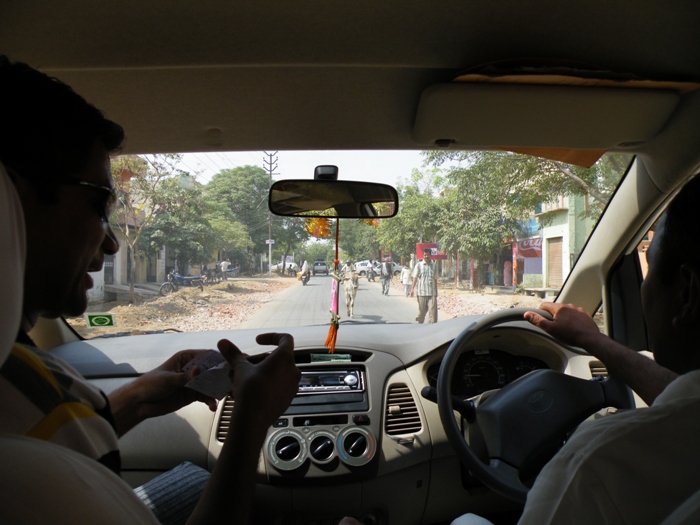
We head away from the Taj, toward the Red Fort.
May 1, 2008 - Around The World, Day 6 - Agra to Ranthambore

We head away from the Taj, toward the Red Fort.
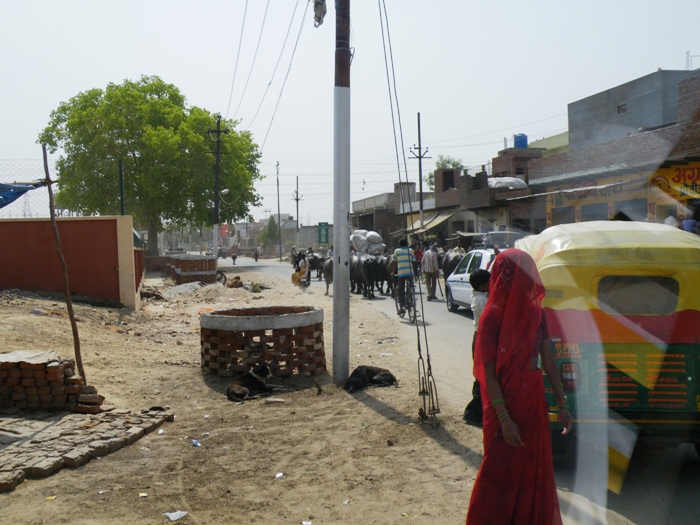
Typical shot of Agra's streets.
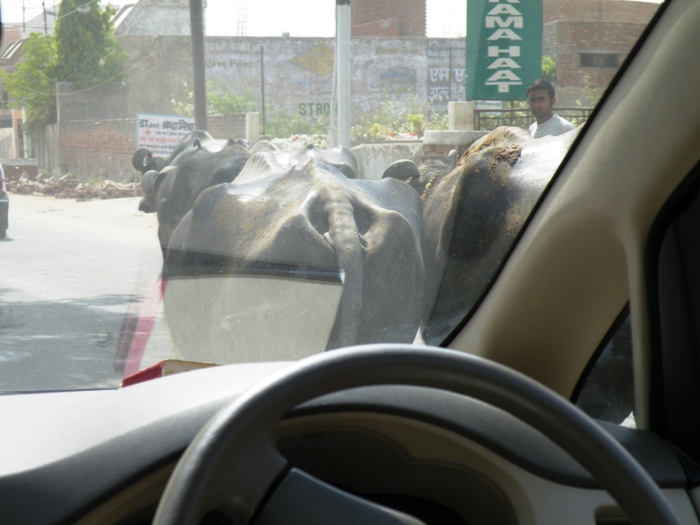
Cows.
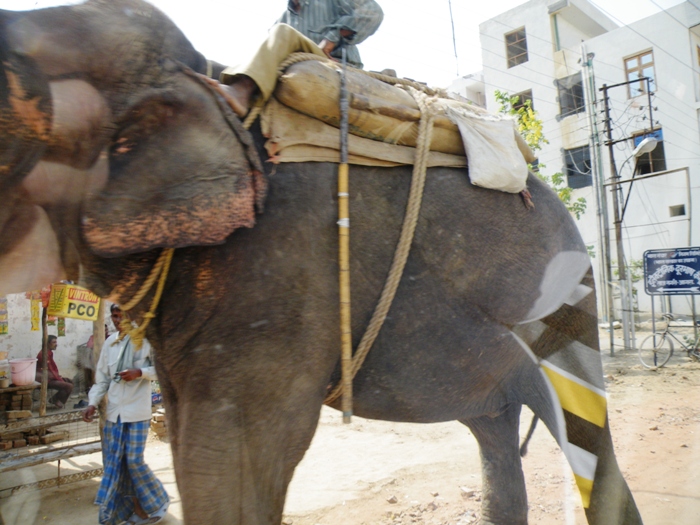
Elephant!
You drive so close to them that when they're on the street, you really can't even get a picture.
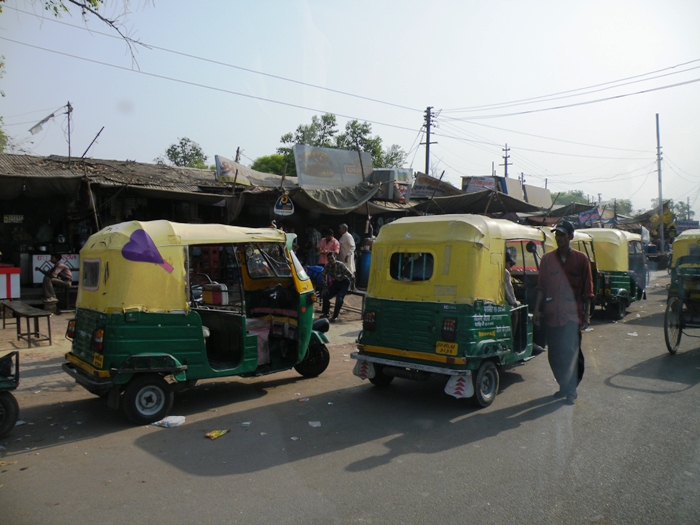
Random shot of typical Indian petticabs.
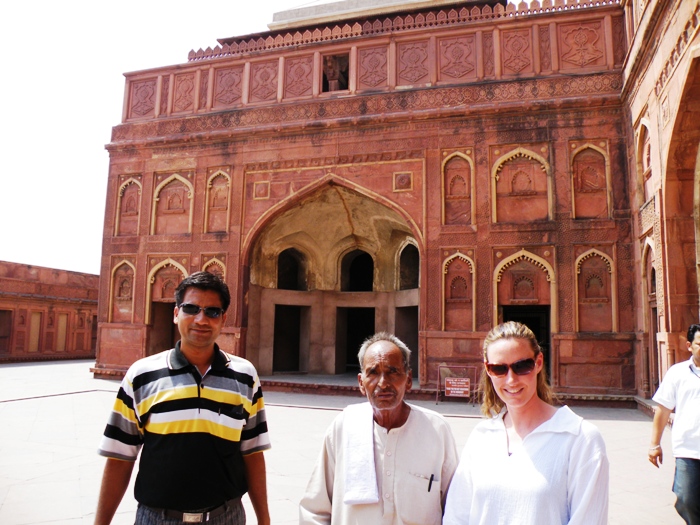
Agra's Red Fort, where the Shah was imprisoned by his son.
Now, many cities in India have red forts, red mosques, etc, so named for the construction materials.
Their clay soil is red like ours (Georgia's, I mean), but they have more blue in it.
It's a pretty color.
Satish (left) hired a local guide to take us through the winding corridors of the Red Fort.
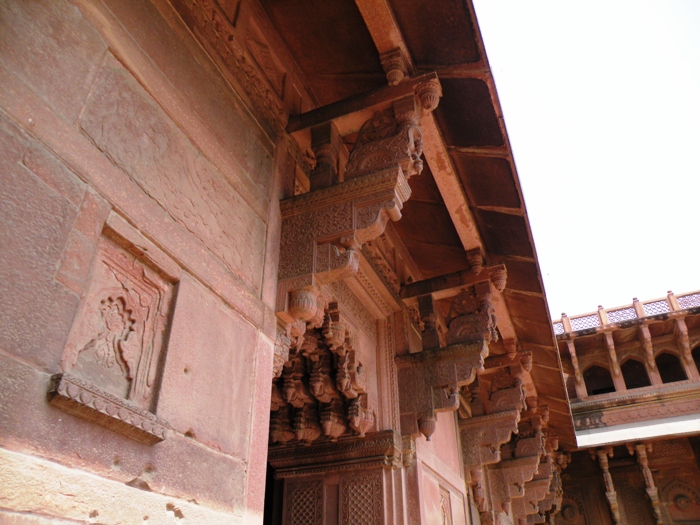
The craftsmanship is awesome.
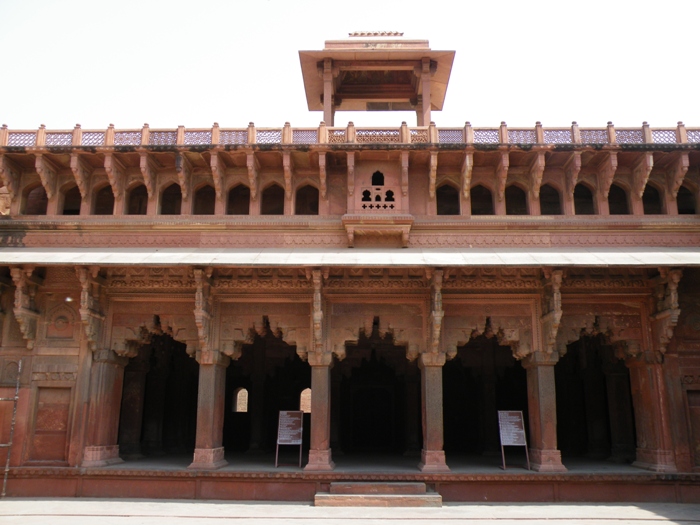
Very different architecture from the US - and from Japan.
Two cities, two drastically different styles. I know that was to be expected, but we kept getting reminded of how different the places were that we were visiting.
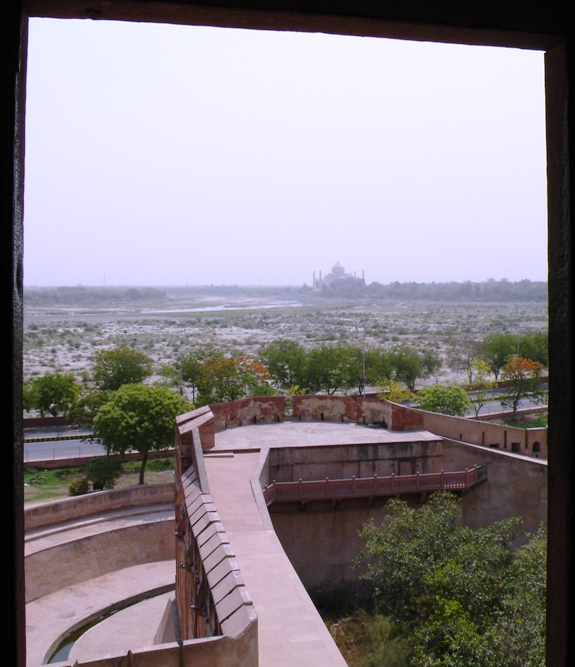
View of the Taj from the Red Fort.
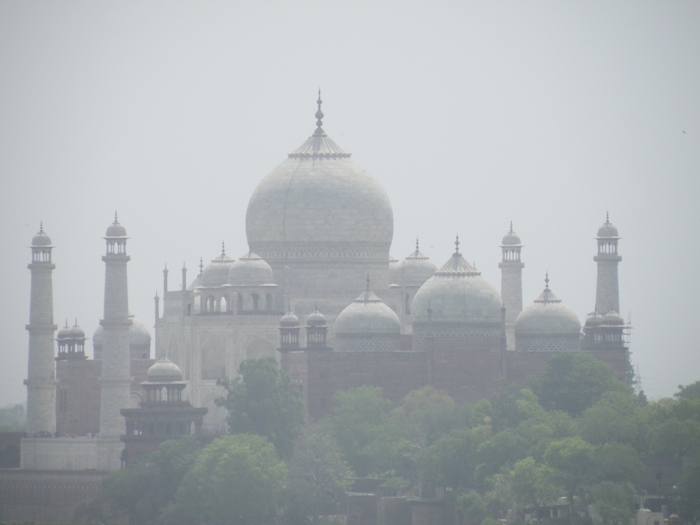
I love my new zoom lens.
What a building!
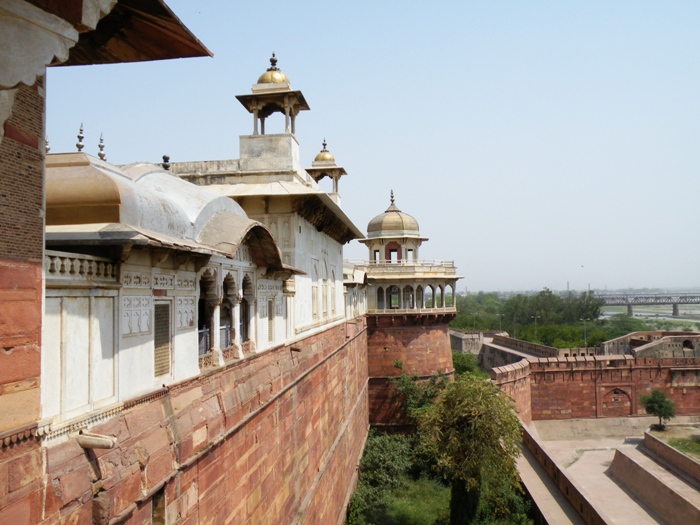
Mid-way through the tour, we get to the area where the Shah was imprisoned.
This is it, though I don't think he was able to access the balcony.
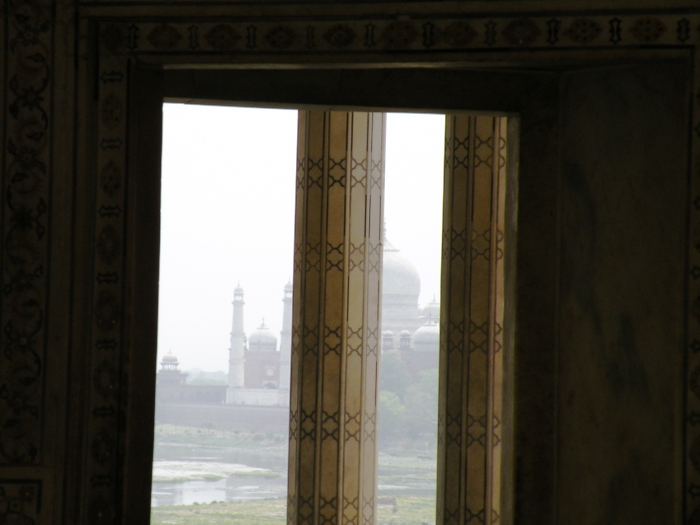
This was the Shah's view of the majestic creation he built for his wife.
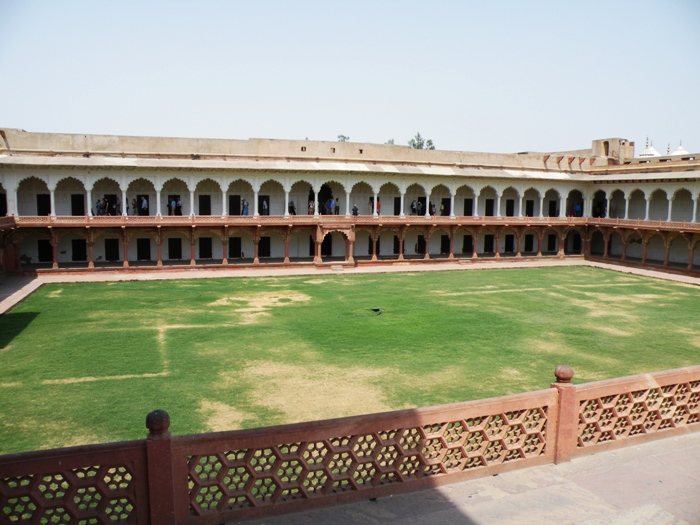
The Red Fort is so large it has a few courtyards.
This was the courtyard of the harem.
Yup, guess who stayed in each of these rooms...
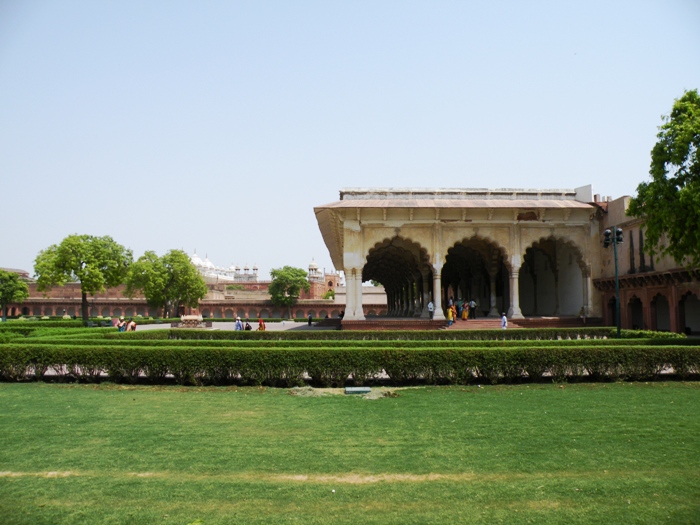
Another courtyard where the rulers heard greivances of the people.
It was here that we noticed local people were taking pictures of us.
(Many tourists go to the Taj, then leave. A slight majority of the visitors at the Taj seemed local to us. The lion's share (or tiger's share here, I guess) of visitors here were local.
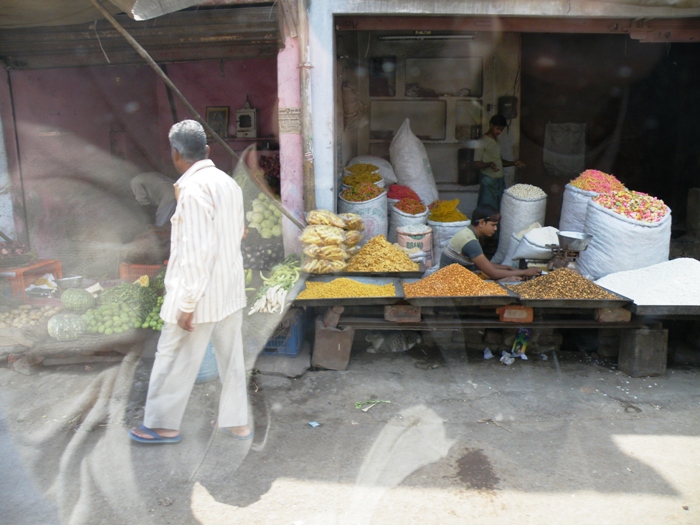
Done with the fort, we head out of Agra, passing makeshift-market-lined streets.
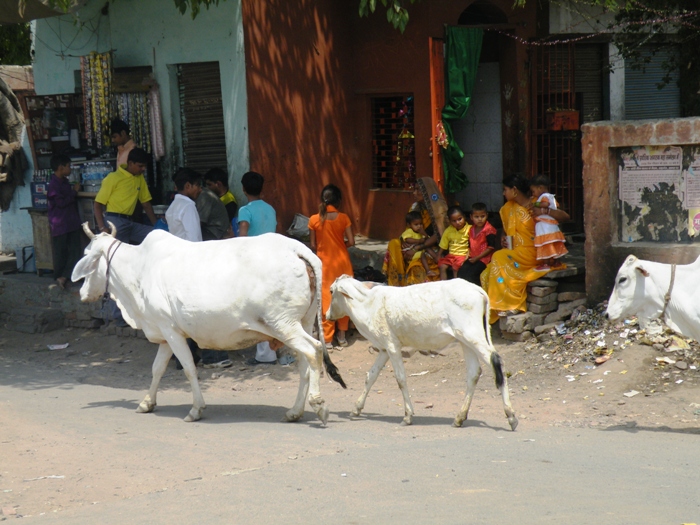
The much anticipated cattle in the streets.
At this point in the trip, we'd just started taking roads, so cattle in the road were novel.
Actually, these look well fed. They have necklaces, so they must be owned.
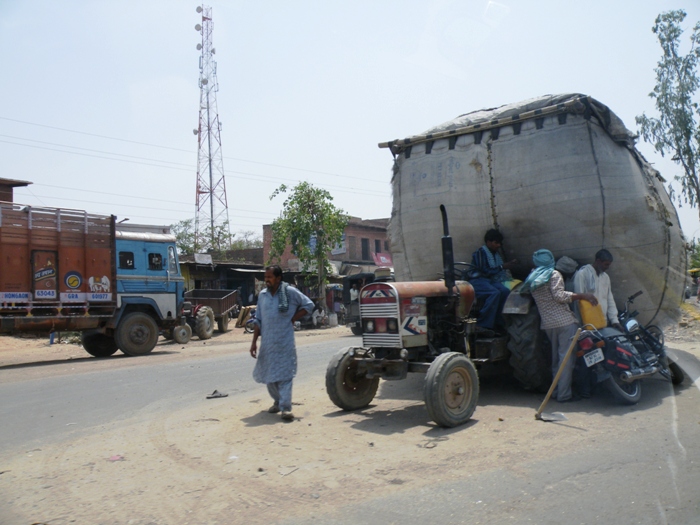
I don't remember taking this picture, but it is very typical.
About 1/3 of the vehicles on the road are tractors. I mean, why buy another car? There's plenty of seating on this.
It is wheat-harvesting season. We were told that the drivers are taking the wheat to the areas of the country with less food, as directed by the government. Again, that's what we were told. However, we continued to see vehicles going in both directions. When I asked why some were going south and some north (and later after we turned, some headed east and some west), my question was greeted with a profound silence, then a 'maybe they're turning around.'
Since the gov't was directing it, I believe that was the plan.
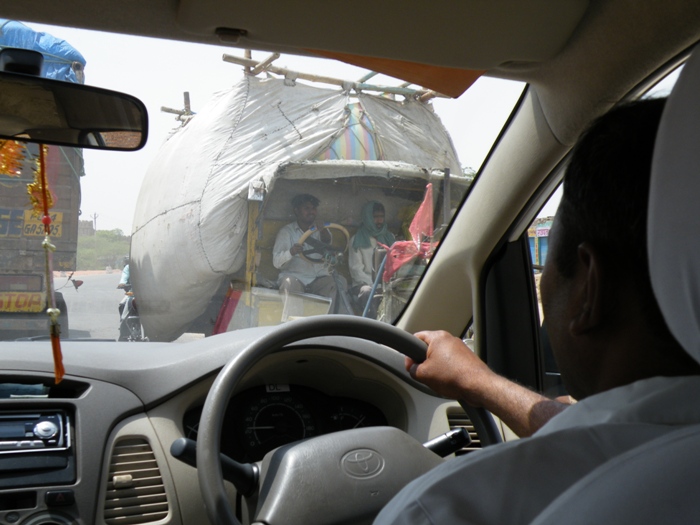
Another 1/3 of the cars are this ('and they moved to Beverly... India that is, strollin cows, spicy food...')
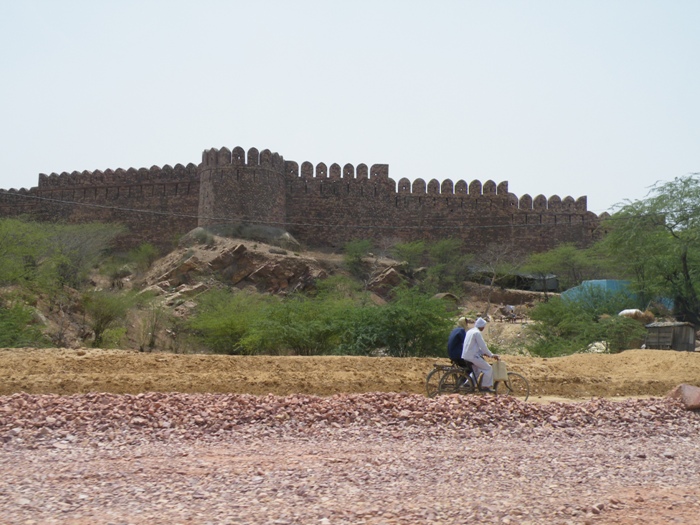
General scenery from Agra to Ranthambore, <200 mile, 5 hour drive.
The people inherited such beautiful buildings...
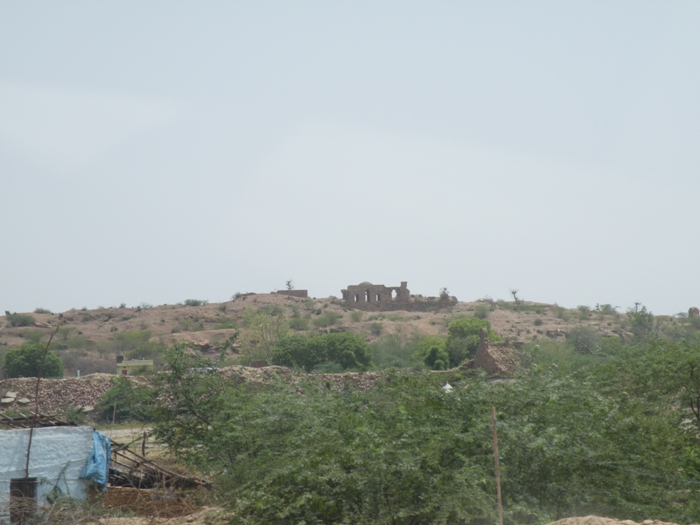
...but took care of precious few.
(That won't be the same at our country.)
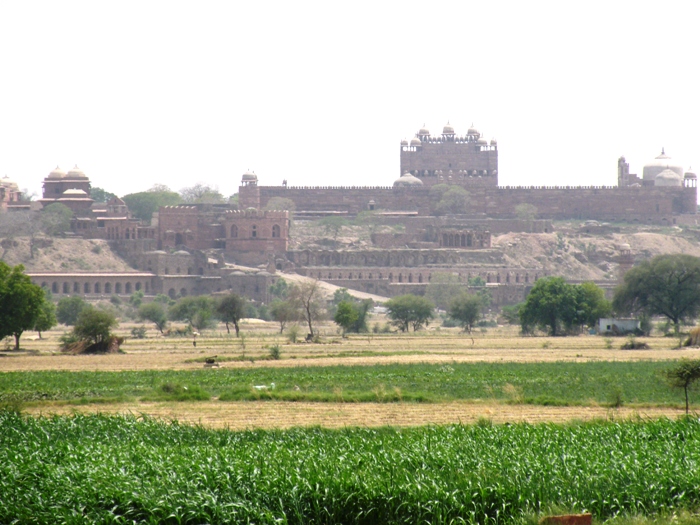
Didn't hear what this was, but it is awesome.
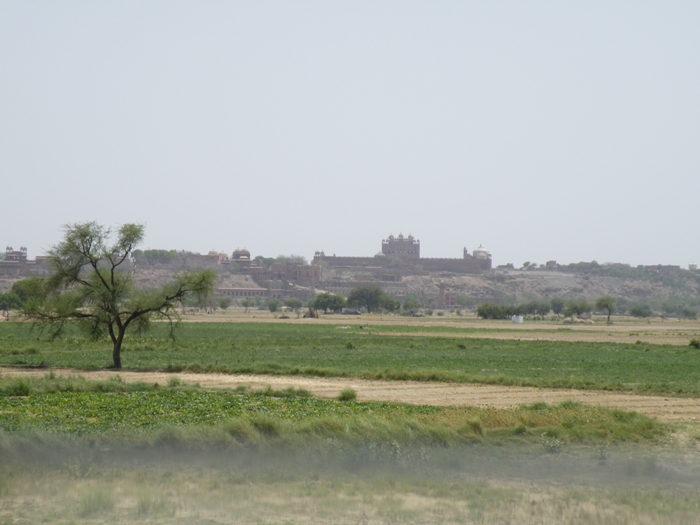
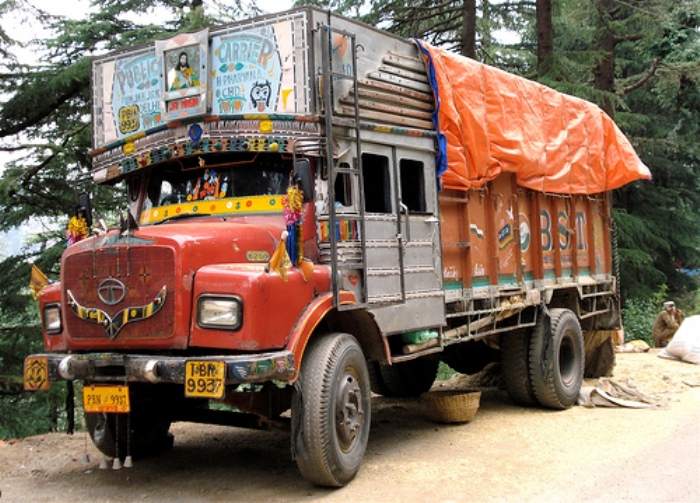
Typical truck - gawdy as hell.
They just keep decorating their trucks. They're all like this - some a little weaker, but many are much more decorated.
It is like a kindergarden class ran rampant on it!
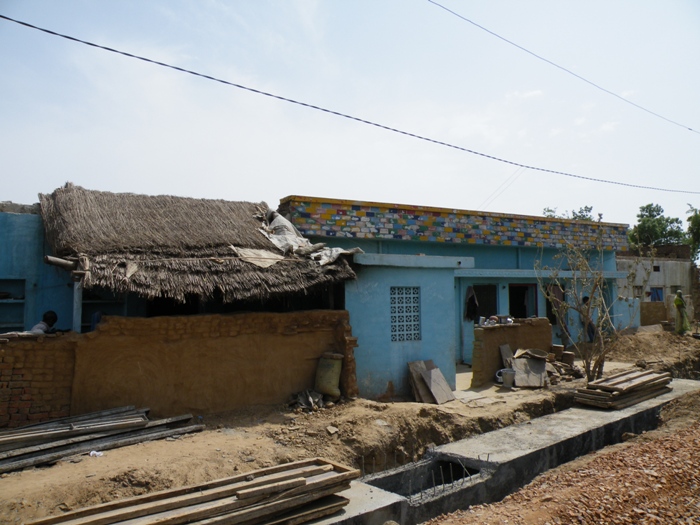
We make a wrong turn (not our only one) and see some of the... most adequate housing we saw in the countryside.
(Seriously.)
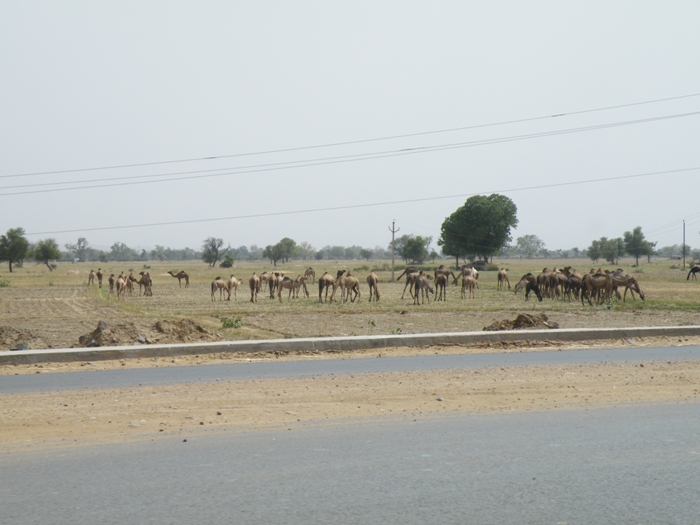
Camel hearders!
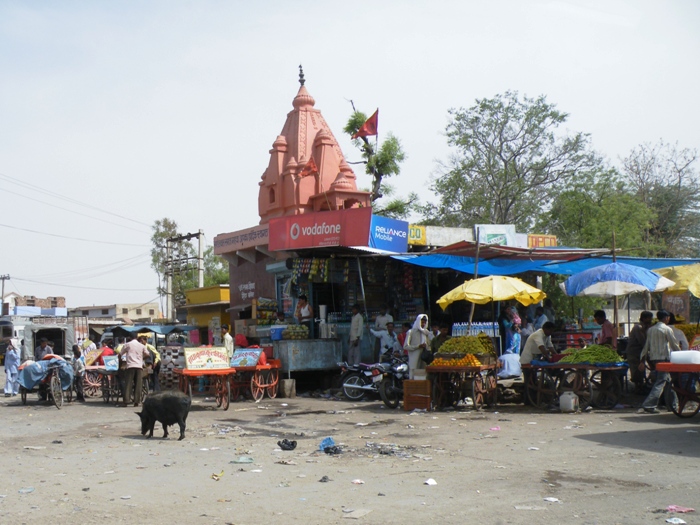
Random town on the way to Ranthambore. This is actually quite similar to Ranthambore's town square.
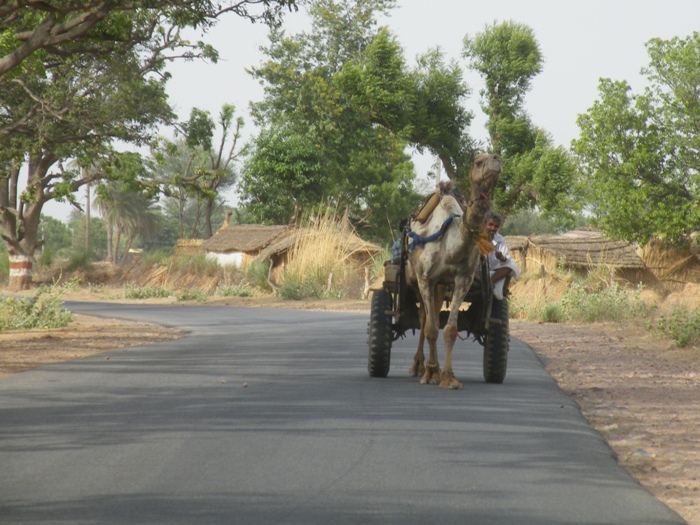
Only in the cities do you really see many donkey, camel, or elephant carts.
Most of the time, they are so overloaded that you cannot see the animal from behind. However, you can start to tell them apart by a few rules:
a) it isn't a horse cart
b) it is never more than one animal
c) if there isn't much on it, a person is pulling it
d) if it is overloaded or 1-12 people are riding on it, a donkey is pulling it
e) if it is overloaded or 1-12 people are riding on it AND the poles attached to harness is elevated 30-40 degrees, it is a camel
f) if it is overloaded or 1-12 people are riding on it AND the harness poles start 8 feet off the ground, it is an elephant
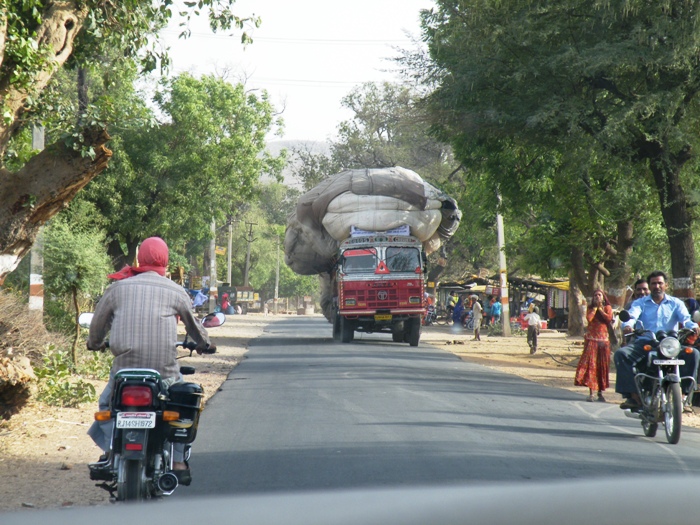
The trucks are so overloaded because the government has no control of its people (and its people have no concept of safety or concern for order) - and the prices of the wheat are so low that to have a manageable amount on the truck wouldn't be worth the cost of hauling it
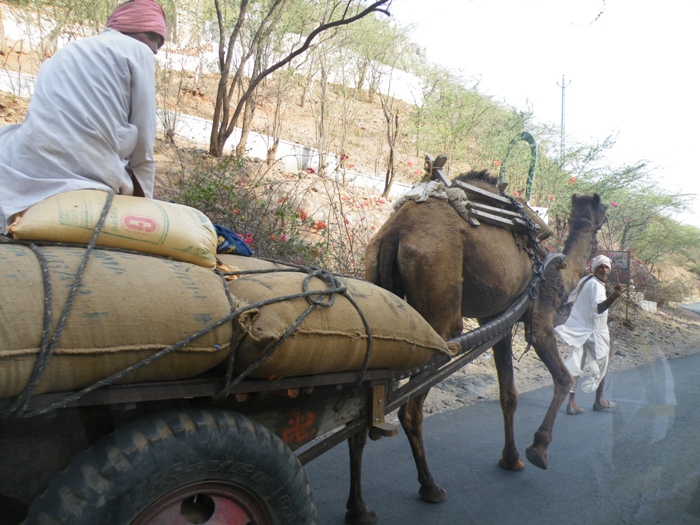
I didn't get tired of seeing camel and elephant carts unless we were trying to get somewhere...
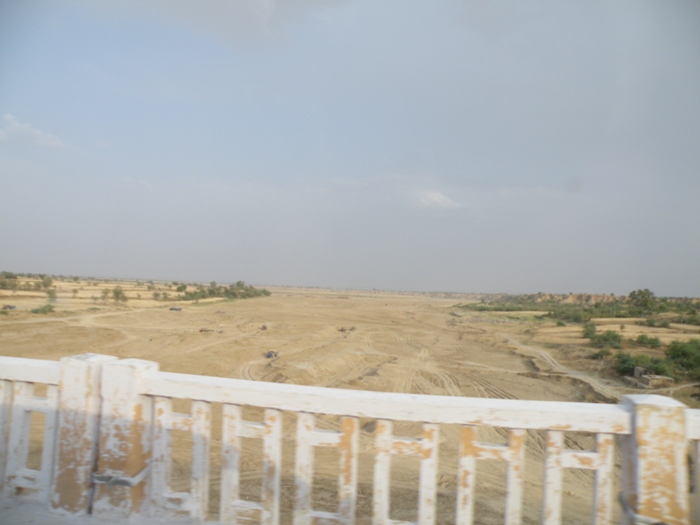
The dry river outside Ranthambore.
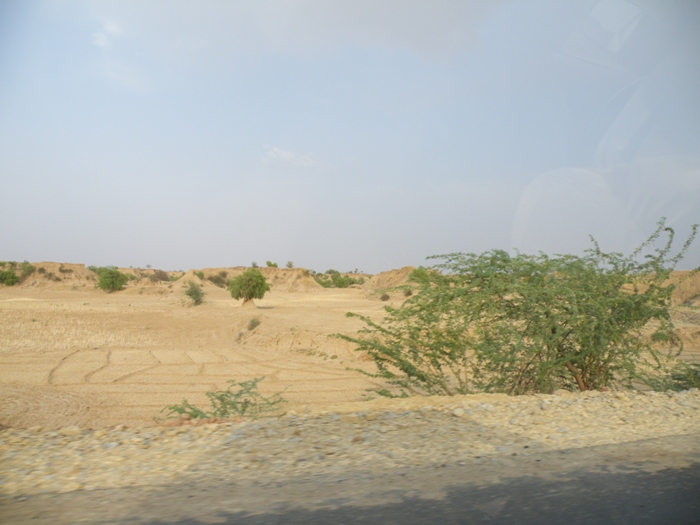
This area is totally flooded during monsoon season.
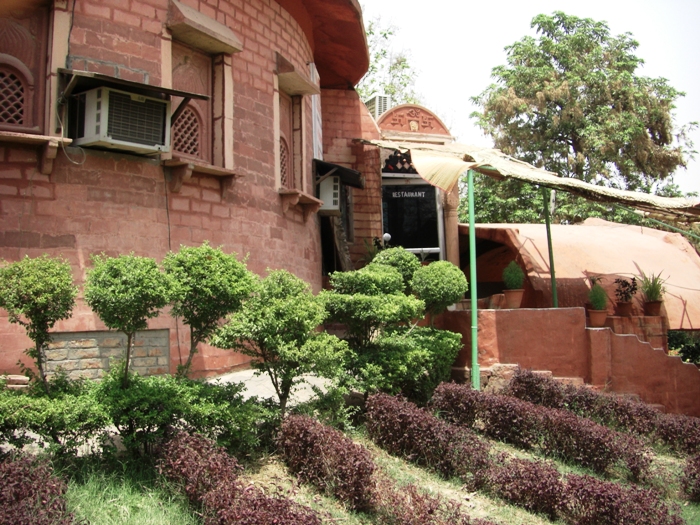
We stop for lunch at a local eco-resort.
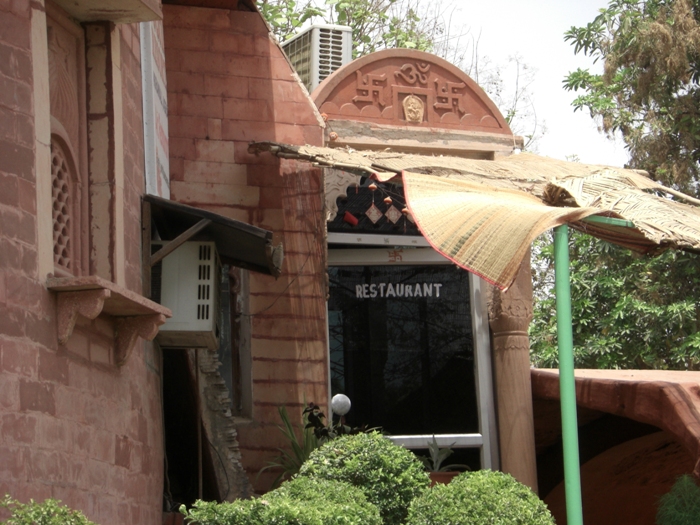
Actually, it wasn't that bad.
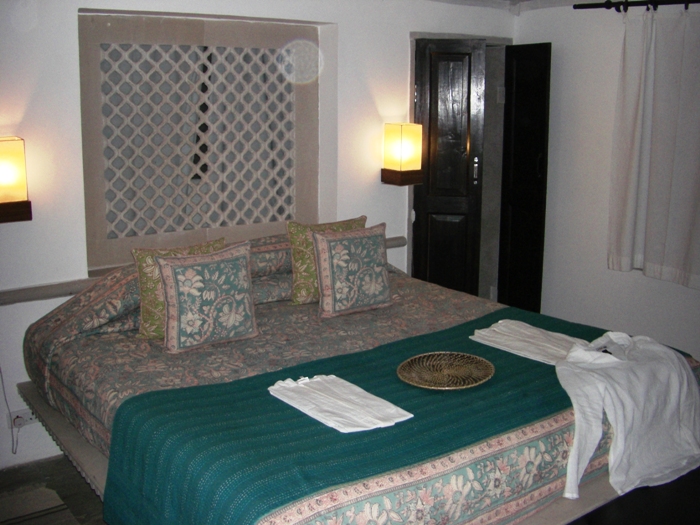
Finally in our amazing room, an oasis in civility's desert.
Original itinerary:
5/1/2008 - Agra